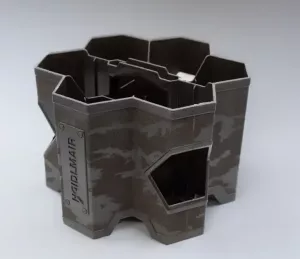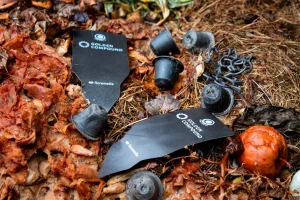From Glossy to Natural Texture – How the Right Tool Surface Determines Appearance, Feel, and Performance
The surface of a plastic part is much more than just a visual element – it directly affects tactile perception, functionality, and even processability. In injection molding, surface textures play a crucial role: depending on the application and material, surfaces must be tailored – ranging from high-gloss to rough textures, from technical functionality to emotional product appeal.
What Surface Types Exist in Injection Molding?
The mold surface directly shapes the final appearance of the molded part. Typical surface finishes include:
- High-gloss surfaces:Polished mold surfaces create mirror-like, glossy plastic parts. Perfect for decorative applications, but prone to scratching.
- Matte finishes:Created via fine sandblasting or chemical etching to achieve a diffuse, low-reflection texture.
- Rough textured surfaces:Achieved using spark erosion or laser engraving, resulting in intentional textures for grip or natural aesthetics.
- Functional/technical textures:Micro-patterns or grooves that reduce friction, prevent sticking, or improve part performance.
Challenges in Surface Design
- Material Dependence
Not all plastics behave the same during molding. Bio-based plastics or natural fiber-reinforced compounds – like our sunflower hull-based material – have different flow and replication behaviors compared to conventional polymers. Coarser or structured surfaces can often be better represented, as natural particles enhance texture definition.
- Mold Cleaning & Maintenance
The more detailed the surface, the more susceptible it becomes to buildup or residue. Especially when working with bio-compounds, careful mold maintenance is essential.
- Demolding Behavior
Highly textured surfaces can complicate demolding – particularly in cases with undercuts or deep textures. Optimal part design, material choice, and process settings must work hand in hand.
- Reproducibility & Series Production
Decorative and functional surfaces must be consistently replicated, even in high-volume production. This requires strict process control, especially when working with natural materials.
Real-World Example: The 6-Pack Carrier with Surface Variety
At the Arburg Technology Days 2023, we teamed up with Haidlmair to produce a 6-drinks carrier made from our sunflower hull compound as a giveaway item. This component serves not only as a practical tool, but also as a tactile and visual showcase:
- Smooth vs. Rough – The carrier displays multiple surface zones on a single part.
- Material Effect – Especially compelling is the interplay between texture and the natural appearance of the sunflower shell particles.
- Design Meets Sustainability – A clear demonstration of how modern bio-based materials can combine both aesthetic appeal and functionality.
Visitors of the event could see – and feel – firsthand how versatile surface textures can be implemented in injection molding, even with sustainable materials.
Conclusion: Surface is More Than Just Aesthetics
In injection molding, the surface determines much more than visual appeal – it can be a key factor in overall product performance. By smartly combining material, mold technology, and surface structure, manufacturers can achieve both functional and sustainable results.
Our 6-drinks carrier made with sunflower seed hulls proves that bio-based plastics offer an impressive range of possibilities – from high-gloss finishes to natural-look textures. Reach out to us if you want to rethink your products with sustainable materials and intelligent surface design.




